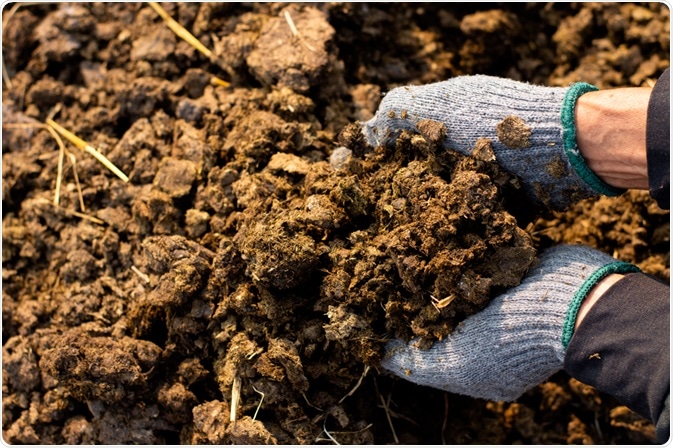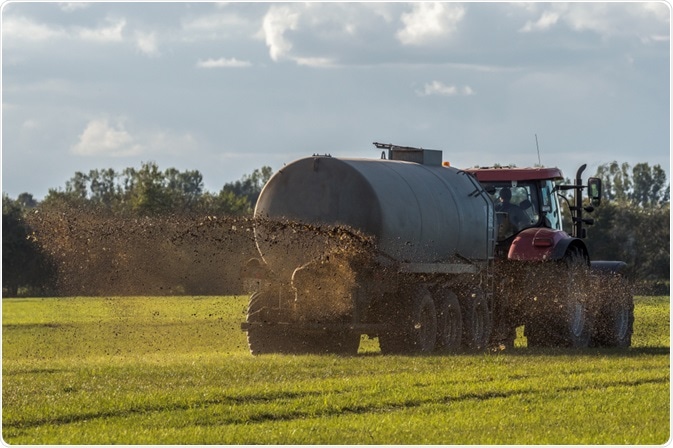Fertilizers have been used since the dawn of agricultural civilization to boost plant health, yet the demands of a rapidly developing population combined with the emerging issues of global environmental change means that sustainable, effective strategies are needed now more than ever.

Image Credit: kram-9/Shutterstock.com
The need to improve plant growth in today’s world
While the number of people that suffer from a lack of adequate nourishment around the world has decreased from 18.6 percent in the 1990s to 11 percent since 2015, this enduring issue is further conflated by global climate change and increasing socioeconomic disparities between nations.
More than ever before, food security now affects dimensions beyond the resources needed for rapidly growing populations due to its effect on economic and environmental dynamics.
Furthermore, with the rapidly decreasing availability of arable land, the use of mineral fertilizers has soared across agricultural systems for decades around the world despite widespread environmental consequences. As such, the development of alternative measures that are sustainable yet cost-effective is increasingly necessary.
In response, researchers have turned to microbiology and the use of manure to develop new strategies.
The past and present of manure application as a strategy for crop fertilization
Manure has been utilized throughout agricultural history, with records dating back at least 8 000 years. This strategy of crop fertilization was used across ancient civilizations, with documented observations from early Arabic societies using pigeon manure to Babylonians and Egyptians using it extensively.
In today’s agricultural system an estimated 4.6 billion tons of manure is produced each year from livestock. However, relatively little is used for fertilizing arable fields because of the high labor costs associated with its transportation and application. Instead, the use of mineral fertilizers has provided stakeholders with the opportunity to employ a cheap, effective, and durable supplement to enhance crop production.
The use of mineral fertilizer has resulted in many environmental impacts from disrupting the physical properties of soil to increasing greenhouse gas emissions as well as the frequency and severity of nutrient run-off.
In addition, mineral fertilizers have been documented to negatively affect the microbial communities in soil, which play a key role in the resilience, sustainability, and quality of crop production. Therefore, alternative solutions are required to prevent further damage caused by the widespread usage of mineral fertilizer.
How manure application affects plant growth
Microbial communities in the soil are essential for the acquisition, cycling, and release of nutrients, whether it is carbon, nitrogen, or phosphorus. Accordingly, soil microbial biomass has been used as important indices to determine the bio-fertility of soil, which directly affects the plants that rely on them.
Essentially, the addition of manure helps rebuild microbial biomass and improve soil functions even in heavily managed crop systems. Manure provides large amounts of organic carbon and nutrients that stimulate enzyme-mediated microbial activity, promoting the growth, abundance, and diversity of microbes in the soil.
In turn, increases in soil microbial content will affect soil-plant interactions by directly increasing nutrient availability or indirectly by altering soil properties through mechanisms of improved moisture and oxygen diffusion.
What elements may affect the effectiveness of this strategy
Although the process of fertilization is well documented and understood, many factors may affect the effectiveness and sustainability of manure application in improving plant health. For instance, it is recognized that its effectiveness can be affected by manure distribution and the duration of manure decomposition in soil.
A recent study by Shibin Liu and a team of German and Chinese researchers in 2017 revealed the extent to which the application of manure can vary depending on spatial and temporal factors by investigating the effects of yak manure on Tibetan barley. The team demonstrated that homogenized application of manure across plant roots led to higher overall microbial activity in comparison to localized application of manure just at the rhizosphere, but the biomass of plants was higher with the localized application of manure.
Interestingly, the discrepancy in response between homogenizing or localizing manure application was explained by differences in microbial competition, as a localized application at the rhizosphere reduced microbe competition with plant roots which then led to enhanced plant performance.
In addition to the application strategy of manure, the type of manure itself may have an effect. The type of manure can vary geographically as livestock varies considerably in type and abundance, which affects plant and soil health, and therefore be used for contextual solutions. The use of poultry manure in Egypt, for example, helped preserve nearly a sixth of the water used in an area that experiences frequent water scarcity as demonstrated by an Egyptian team of scientists.
The application of manure in future systems
In a review of scientific literature published in November 2019, Fengling Ren et al. outlined the known responses of manure application to fertilize crop systems. The review presented how effective manure can be to fertilize emerging crop systems as well as restore systems that had been subjected to mineral fertilizer.
Moreover, the team revealed how the strategy of manure application was the highest influential factor in determining the effectiveness of this strategy, but in a close second was environmental effects including soil and climate properties.
Such results suggest that solutions to overcoming environmental challenges in the future may be more difficult than expected. Sustainable solutions to curb environmental degradation in modern agricultural systems may indeed be less effective when looking into the future.
Nevertheless, promising research has highlighted the potential for using a combination of strategies to improve plant growth using manure. Fertilization measures include the use of a mix of manure types and strategies of application as well as applying it in conjunction with other measures such as crop diversification, genetic modification, and rotational crop systems.

Image Credit: andrekoehn/Shutterstock.com
References:
- El- Samnoudi, I. M. et al. (2019) ‘Combined Effect of Poultry Manure and Soil Mulching on Soil Properties, Physiological Responses, Yields and Water-use Efficiencies of Sorghum Plants under Water Stress’, Communications in Soil Science and Plant Analysis. Taylor & Francis, 50(20), pp. 2626–2639. doi: 10.1080/00103624.2019.1671445.
- Liu, S. et al. (2017) ‘Spatio-temporal patterns of enzyme activities after manure application reflect mechanisms of niche differentiation between plants and microorganisms’, Soil Biology and Biochemistry, 112, pp. 100–109. doi: 10.1016/j.soilbio.2017.05.006.
- Ren, F. et al. (2019) ‘Changes in soil microbial biomass with manure application in cropping systems: A meta-analysis’, Soil and Tillage Research, 194, p. 104291. doi: 10.1016/j.still.2019.06.008.
Further Reading
Last Updated: Nov 25, 2020